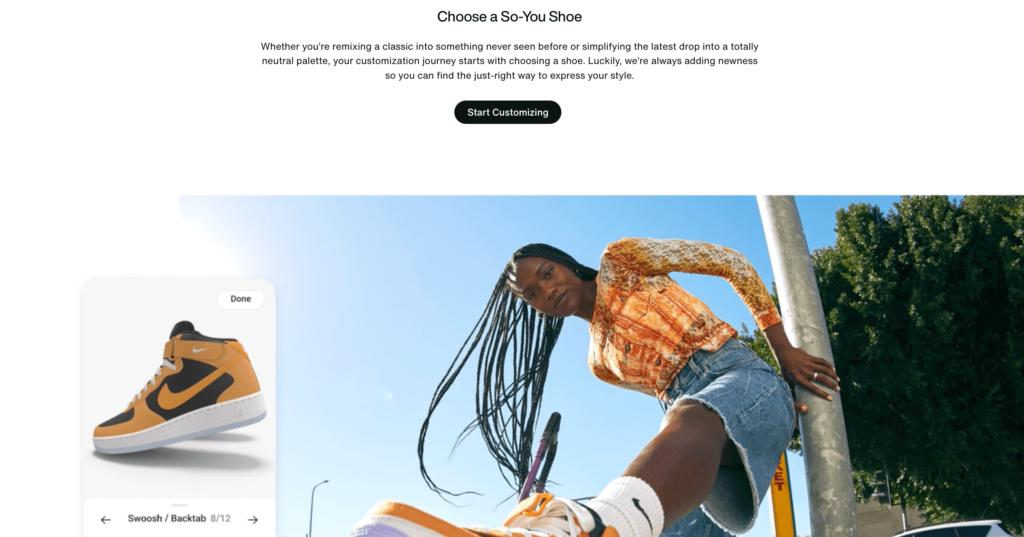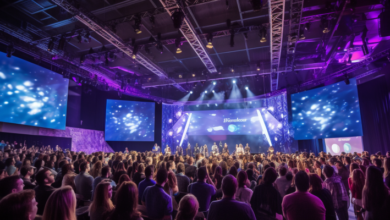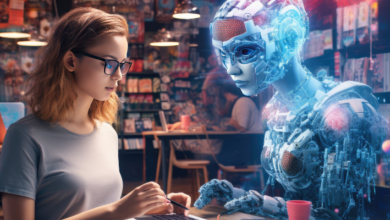AI has many benefits for digital marketing

Imagine an environment where marketing is laser focused, curated specifically for each individual user and adjusted in real-time.
AI is transforming digital marketing. It’s not just a fleeting tech trend; it’s where ingenuity meets unmatched accuracy. It is crucial for digital marketers, agency owners, and tech enthusiasts who want to remain at the forefront of the industry, that they understand the enormous changes AI will bring.
Come and learn how AI not only enhances but also transforms the digital landscape.
I. AI: The new era of consumer engagement
Consumers are inundated with tons of information and advertisements daily, and standing out requires creating content that speaks directly to the audience’s preferences, needs, and aspirations.
Personalization enhanced by AI takes centre stage. Personalized marketing has become the new gold standard. AI is bringing it to a whole new level of accuracy and relevancy.
Hyper-Personalization in Messaging
At its core, hyper-personalization is about delivering content tailored so it feels handpicked for each user. It’s not about broadly targeting demographics but narrowing it down to individual preferences, behaviors, and patterns.
For example, the global music streaming giant Spotify’s marketing strategy offers a perfect illustration with its “Discover Weekly” feature. By analyzing a user’s listening habits, favorite genres, skipped tracks, and more, AI algorithms curate a weekly playlist that feels uniquely theirs. Not only are the best-known tracks recommended, but also new songs that are tailored to the musical preferences of the user.
Beyond Messaging: Embracing Product Personalization
Personalized products are a great way to build customer loyalty. AI in this area goes far beyond simple suggestions. The AI actively works with the consumer, helping them to create products that reflect their wants and needs.
Nike is synonymous with innovation and athletic excellence. With “Nike By You“, they’re elevating the shopping experience to creative collaboration.

Customers aren’t just choosing colors or designs. Powered by AI, the platform suggests design elements based on the user’s preferences, previous purchases, and even trending styles, ensuring a product that’s as unique as the individual designing it.
II. AI Marketing: Increasing Efficiency and Profitability
AI can be a game-changer because it is not only a useful tool, but also a powerful one.
Let’s delve deeper into how AI augments efficiency in marketing:
Automation Revolution
AI is revolutionizing digital marketing. AI allows marketers to concentrate on higher-order activities, such as strategy and creativity. It does this by automating repetitive operations and eliminating complex tasks.
Maria Carpena, an expert in the industry has some interesting insights. She stresses the transformational power of AI for areas such as lead routing. AI can predict potential leads and route them to the best salesperson based factors such as purchasing history, interactivity data, etc.
AI is a powerful tool for email marketing. AI systems are able to analyze the recipient’s behavior and create personalized email content. They can also recommend products based on their preferences.
The result is? Increased engagement and successful campaigns.
Fast and precise data analysis
Every successful marketing decision is based on data, which means it’s important to analyse the data accurately and quickly.
AI doesn’t just analyze faster; it analyzes smarter, identifying patterns and trends that might be missed by traditional methods. It is time-consuming and nearly impossible to manually sift through mountains of data. AI-powered software can quickly process data to segment audiences, identify high-performing content and predict future trends. This allows marketers to adjust their strategies in real time, making sure campaigns are relevant, engaging and effective.
III. Strategic Innovations in Marketing Using Data Insights
In order to gain useful insight from the ocean of digital data, you have to search for it like a needle hidden in a stack of hay. This is where AI’s precision and computational prowess come into play, assisting marketers in navigating this data deluge and making informed, strategic decisions.
AI Marketing: A Proactive Approach
The traditional marketing strategy is often reactive, with actions taken on the basis of past events and data. In contrast, AI-driven marketing emphasizes proactivity—forecasting trends, anticipating consumer needs, and adjusting strategies in real time.
Let’s think of tools like Google Ads. AI integration allows real-time bidding based on factors such as user behavior, competition, market trends and other key indicators. The constant adjustments make sure ads not only get seen by the intended audience but that they are also cost-effective and optimized. It’s a testament to AI’s ability to predict and adjust on the fly, ensuring marketing efforts are always a step ahead.
How to decipher customer patterns
Customer behavior, preferences, and desires can be difficult to understand. AI tools can help to decode this complexity and identify patterns that will guide your marketing strategy.
While AI can sift through data to provide insights on what customers might prefer or how they behave, data alone doesn’t create a connection, just as KniahynyckyjIn their article published on X Business, they state that.
It can tell you a customer’s preferences, but crafting a message that resonates emotionally requires the human touch. An AI, for example, can use social media sentiment to determine how people perceive a particular product. But human marketers create stories that evoke emotions, and build lasting relationships with brands.
IV. AI-Powered Visuals: Increasing Audience Engagement
Digital age is by nature visual. Visuals are revealed with every scroll, click, or swipe. They can either engage or repel a viewer. With AI’s intervention, video production and visual content are experiencing an evolution, ensuring that what audiences see resonates deeply, both aesthetically and emotionally.
AI: Redefining video personalization
AI brings personalization to video. Video content is no longer generic. AI now creates tailored video experiences based upon user preferences, behavior and data.
Imagine streaming sites that suggest movie trailers according to your viewing history, or online shops that show product videos based on what you like.
The Power of Visual Storytelling Enhanced by Insights
It’s one thing to tell a compelling story; it’s another to visualize it in a manner that strikes a chord. AI analyses vast datasets in order to determine which visual elements are most appealing to different audiences segments. Whether it’s the color palette, the pacing, or the background score, AI-driven insights ensure that every frame and every transition holds the viewer’s attention.
How to improve production and editing efficiency
AI simplifies video production. It is labor intensive and time-consuming. From automating tedious editing tasks to suggesting optimal cuts based on audience engagement metrics, AI ensures that the final visual product isn’t just high-quality but also deeply engaging.
Predicting visual trends
It is important to stay ahead in the digital world. AI doesn’t just analyze current visual trends; it predicts upcoming ones. Marketers must be aware of what their audience wants to see. They need to make sure that the visual content they create is always fresh, current, and effective.
V. Balancing AI’s Potential with its Challenges
Artificial intelligence offers unmatched advantages to marketing. As with any powerful tool it comes with challenges.
Digital Efficiency is not the only way to go. Human interaction over digital efficiency
AI tools are becoming more common, and this may suggest that technology should be the priority in all interaction. But there is a constant demand for real human contact, in particular areas such as customer support. While AI can provide quick answers, the empathy and understanding of human interaction can’t be replicated, emphasizing the need for a balanced approach.
Automated Creativity
AI may excel at data processing and automating repetitive tasks, but true creativity is a human trait. Campaigns that resonate most are often born from a fusion of AI’s analytical strengths and the human ability to craft emotionally rich narratives.
Understanding AI’s Limitations
AI works on the basis of patterns and algorithms. It is extremely efficient, but sometimes it can be off. For instance, while a streaming platform’s AI might suggest shows based on viewing history, it may not capture the whims or evolving tastes of a user. It is important to recognize these boundaries so that the AI does not try to replace human preferences, but rather complements them.
VI. AI Innovations Revolutionize SEO Strategies
SEO is not an exception to the trend of digital marketers looking more and more at AI in order to advance their efforts. AI is a revolutionary approach to SEO that ensures businesses are not only relevant, but also at the top of organic search results.
Predictive Keyword Analysis
Keyword research can be done using traditional tools, which tell you what people have been searching for. AI does it one step further. It analyses vast data sets and predicts which keywords will be popular in the next few years. Businesses can stay ahead by focusing on emerging keywords and implementing them in content before they get too competitive.
Real-time content optimization
AI-driven tools can now analyze content in real-time, recommending improvements to improve readability, keywords density and SEO value. By utilizing Natural Language Processing (NLP), these tools can understand the context, sentiment, and user intent behind the content, ensuring it’s not just optimized for search engines, but genuinely resonates with readers.
AI Enhances the User Experience
Google, for example, prioritizes the user’s experience. AI allows websites to analyze the behavior of users and adapt in real-time, resulting in personalized experiences. Whether it’s suggesting relevant content, adjusting layouts based on user devices and preferences, or even predicting what a user might search for next, AI-driven optimizations can lead to longer site visits, reduced bounce rates, and higher search engine rankings.
Building Links and Outreach
Link-building is an essential part of SEO but can be time consuming. AI streamlines this process by identifying possible outreach opportunities, analyzing backlink prospect quality and automating certain outreach processes. The focus is on getting high-quality links with relevant content that will boost SEO.
The Analysis of Algorithms
The algorithms of search engines are always changing. AI tools are able to monitor and predict these changes, giving businesses advice on how they can adapt. This proactive approach makes sure that websites are compliant, and they’re optimized using the best SEO practices.
Your comments are well taken. Let’s try to align the new H2s and their details with the format and depth provided in the excerpt.
VII. Conversational AI: Enhancing Digital Interactions
Chatbots, or virtual assistants are among the leaders in the digital revolution. These AI-powered entities are not just about responding; they’re about engaging, understanding, and evolving.
Interactive Engagements
In this day and age, just answering isn’t enough. Artificial intelligence-driven virtual assistants and chatbots allow users to engage in conversations that feel intuitive and natural. These conversations provide valuable data about the customer’s behavior, aspirations, and preferences.
Voice Assistants
Alexa, Siri and Google Assistant are devices that have transcended traditional engagement. They make user experiences smoother, more dynamic and engaging by facilitating voice searches and commands. The interactions provide much more than just answers; they offer solutions that are customized to each individual.
Gathering insights
Every interaction you have with a voice assistant or chatbot is an opportunity. Businesses can constantly refine their strategies by analyzing the interactions. This will ensure that they remain in sync with changing consumer preferences and expectations.
VIII. AI Precision for Advertising: Maximizing the Effectiveness of Your Ads
Programmatic advertising isn’t merely about displaying ads; it’s about displaying the right ad to the right person at the right time. AI has been pivotal in making this a reality, ensuring that businesses don’t just reach their audience but engage them in a manner that’s impactful and resonant.
Segmenting Audiences
AI can help identify the golden fish in the ocean of digital audiences that will engage the most. By assessing user patterns, behaviors, and preferences, AI segments the audience in a manner that’s ultra-precise, ensuring that ad content isn’t just seen but is truly impactful.
Maximizing ROI
Each dollar you spend on marketing should produce results. AI, with its predictive analytics capabilities, ensures that businesses don’t just spend but invest. AI can generate effective and efficient campaigns by predicting the ad slots and ad space with the best ROI.
The Consumer Touchpoints: Adapting Your Business
AI helps consumers navigate a complicated digital journey. It ensures every point of contact and interaction is meaningful. By mapping the consumer’s journey and adjusting ad placements accordingly, AI ensures that content remains relevant, engaging, and persuasive.
The conclusion of the article is:
The ones who can adapt to changing environments of audience engagement and content creation will be the most successful. Don’t just observe the evolution; be a part of it. Prepare yourself for success with AI-driven strategy and the tools that go along with it.
It is time to act now. .
Click here to read the article in full You can read more about it here







